This is named after the Up Steps Inn, which stood on the same site and was built in the early 19th century, then demolished in the 1930s. The pub got its unusual name because its entrance was above street level, up a few stone steps. Although demolished, the Up Steps has not been forgotten, as its distinctive name lives on in this Wetherspoon pub.
Prints and text about The Up Steps Inn.
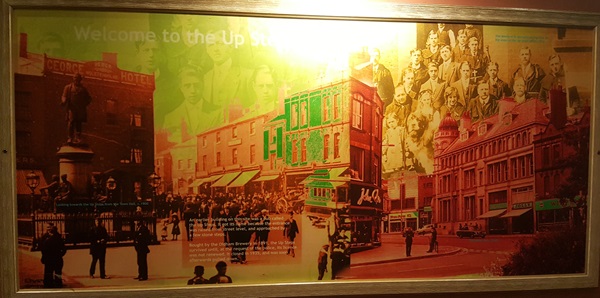
The text reads: An earlier building on this site was a pub called the Up Steps. It got its name because the entrance was raised from street level, and approached by a few stone steps.
Bought by the Oldham Brewery in 1891, the Up Steps survived until, at the request of the police, its licence was not renewed. It closed in 1935, and was soon afterwards pulled down.
A print and text about William Walton.
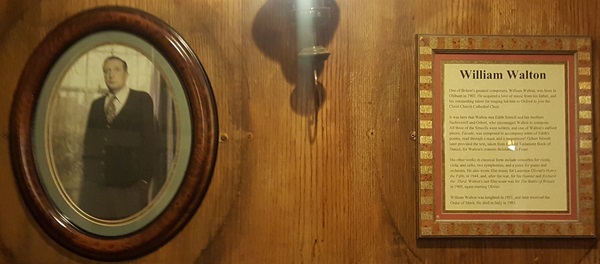
The text reads: One of Britain’s greatest composers, William Walton, was born in Oldham in 1902. He acquired a love of music from his father, and his outstanding talent for singing led him to Oxford to join the Christ Church Cathedral Choir.
It was here that Walton met Edith Sitwell and her brothers Sacheverell and Osbert, who encouraged Walton to compose. All three of the Sitwells were writers, and one of Walton’s earliest pieces, Façade, was composed to accompany some of Edith’s poems, read through a mask and a megaphone! Osbert Sitwell later provided the text, taken from the Old Testament Book of Daniel, for Walton’s oratorio Belshazzer’s Feast.
His other works in classical form include concertos for violin, viola, and cello, two symphonies, and a piece for piano and orchestra. He also wrote film music for Laurence Oliver’s Henry the Fifth, in 1944, and, after the war, for his Hamlet and Richard the Third. Walton’s last film score was for The Battle of Britain in 1969, again starring Olivier.
William Walton was knighted in 1951, and later received the Order of Merit. He died in Italy in 1983.
Prints and text about adult education.
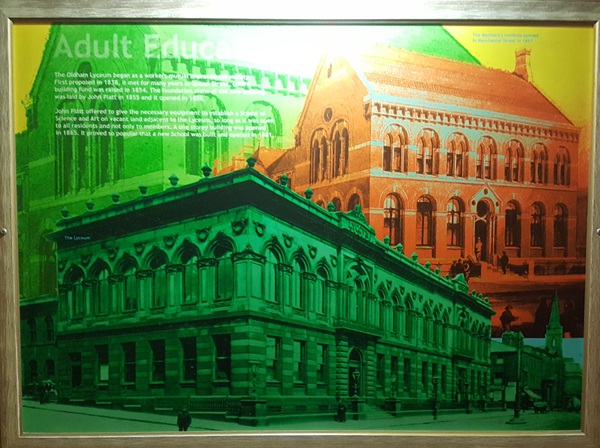
The text reads: First proposed in 1838, it met for many years in Queen Street until the building fund was raised in 1854. The foundation stone of the new building was laid by John Platt in 1855 and it opened in 1856.
John Platt offered to give the necessary equipment to establish a School of Science and Art on vacant land adjacent to the Lyceum, so long as it was open to all residents and not only to members. A one storey building was opened in 1865. It proved so popular that a new School was built and opened in 1881.
Prints and text about John Platt.
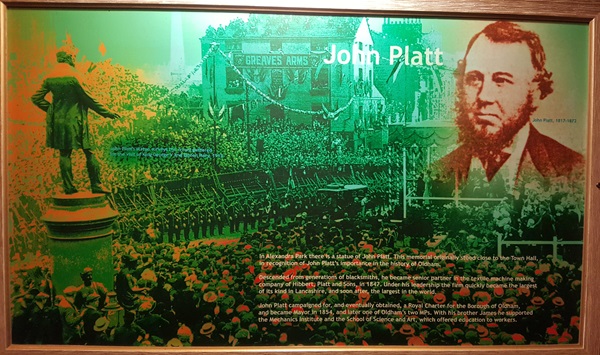
The text reads: In Alexandra Park there is a statue of John Platt. This memorial originally stood close to the Town Hall, in recognition of John Platt’s importance in the history of Oldham.
Descended from generations of blacksmiths, he became senior partner in the textile machine making company of Hibbert, Platt and Sons, in 1847. Under his leadership the firm quickly became the largest of its kind in Lancashire, and soon after, the largest in the world.
John Platt campaigned for, and eventually obtained, a Royal Charter for the Borough of Oldham, and became mayor in 1854, and later one of Oldham’s two MPs. With his brother James he supported the Mechanics Institute and the School of Science and Art, which offered education to workers.
Prints and text about Alexandra Park.
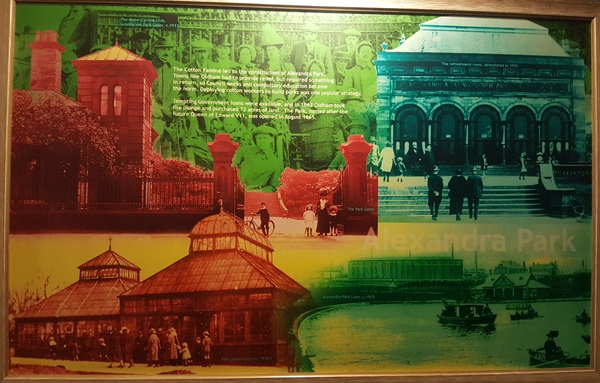
The text reads: The Cotton Famine led to the construction of Alexandra Park. Towns like Oldham had to provide relief, but required something in return, so council works and compulsory education became the norm. Deploying cotton workers to build parks was one popular strategy.
Tempting government loans were available, and in 1863 Oldham took the plunge and purchased 72 acres of land. The park, named after the future Queen of Edward VII, was opened in August 1865.
A photograph of Mumps Bridge and tram depot, Oldham, c1910.
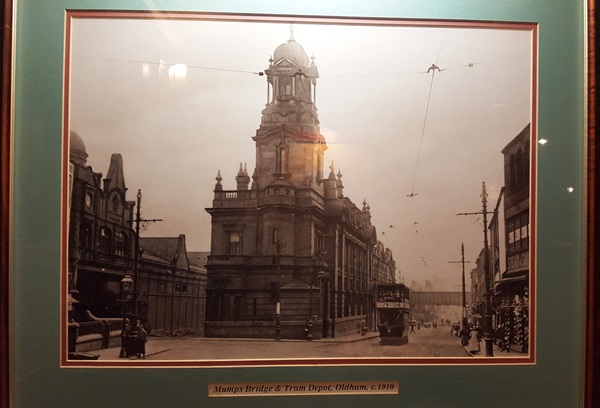
A photograph of Market Place, Oldham, c1905.
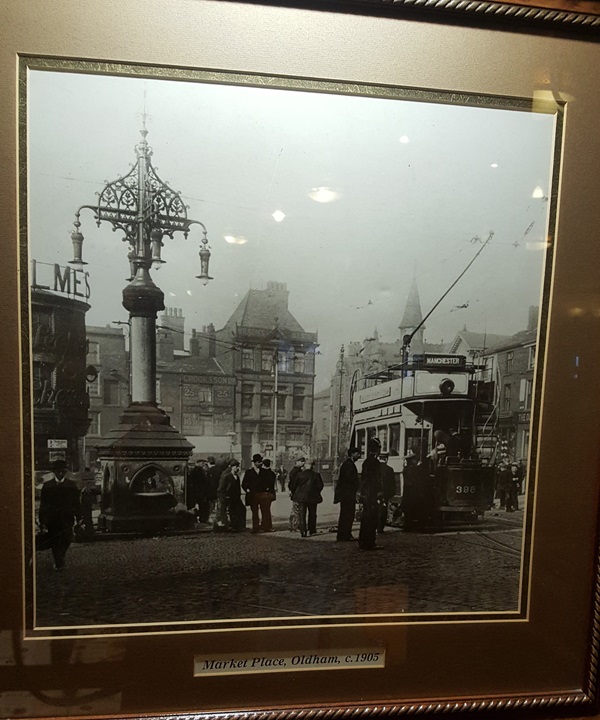
A photograph of Oldham Concertina Band, c1909.
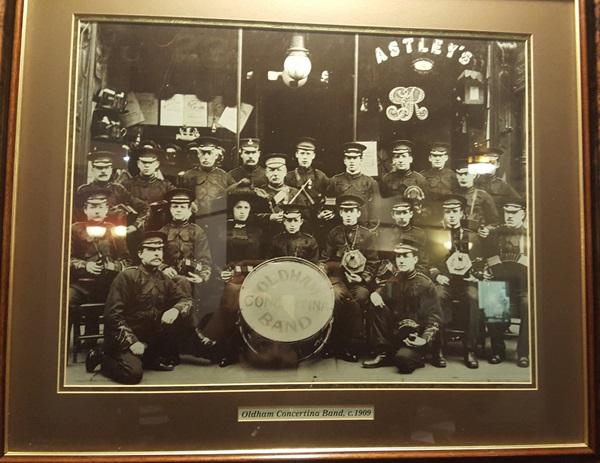
A photograph of Rhodes Bank, Oldham, c1910.
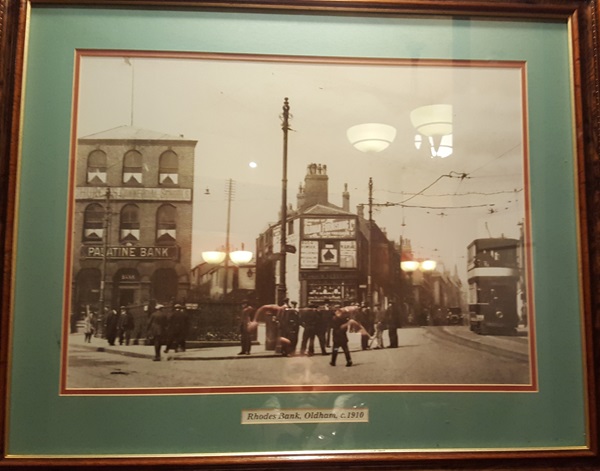
A photograph of Yorkshire Street, Oldham, c1909.
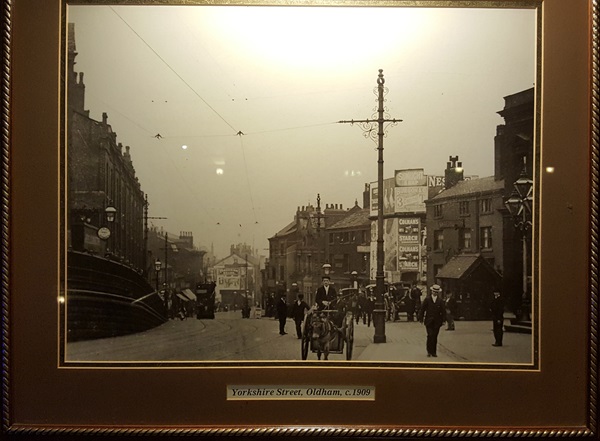
If you have information on the history of this pub, then we’d like you to share it with us. Please e-mail all information to: pubhistories@jdwetherspoon.co.uk